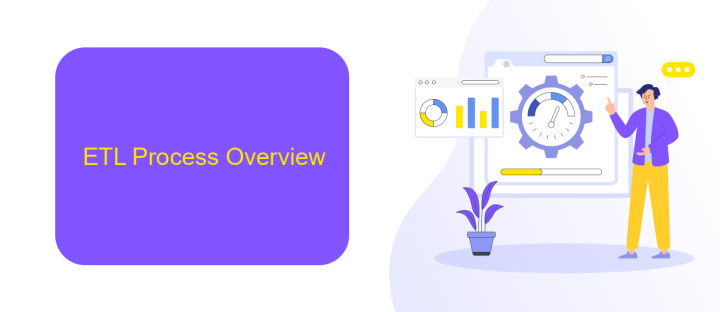ETL Data Analytics
ETL (Extract, Transform, Load) data analytics is a critical process in modern data management, enabling organizations to gather, refine, and utilize vast amounts of information efficiently. By extracting data from various sources, transforming it into a usable format, and loading it into a centralized system, ETL streamlines data workflows and enhances decision-making capabilities. This article explores the fundamentals and benefits of ETL in data analytics.
Introduction to ETL Data Analytics
ETL (Extract, Transform, Load) Data Analytics is a crucial process in the field of data management and business intelligence. It involves extracting data from various sources, transforming it into a suitable format, and loading it into a data warehouse or another destination for analysis. This process helps organizations make informed decisions by providing a consolidated view of their data.
- Extract: Data is collected from multiple sources, such as databases, APIs, and flat files.
- Transform: The extracted data is cleaned, formatted, and transformed to meet the requirements of the target system.
- Load: The transformed data is loaded into a data warehouse, data lake, or another destination for analysis and reporting.
One of the tools that can simplify the ETL process is ApiX-Drive. This service allows seamless integration between various data sources and destinations, automating the extraction and loading phases. By using ApiX-Drive, organizations can streamline their data workflows, reduce manual intervention, and ensure data consistency and accuracy in their analytics processes.
ETL Process Overview

The ETL (Extract, Transform, Load) process is a fundamental aspect of data analytics, enabling organizations to gather data from various sources, transform it into a suitable format, and load it into a data warehouse or other storage systems. This process involves three main stages: extracting data from source systems, transforming the data to fit operational needs, and loading the transformed data into a target system. Each of these stages is critical for ensuring data accuracy, consistency, and usability, which are essential for making informed business decisions.
Modern ETL tools and services, such as ApiX-Drive, simplify the integration and automation of data workflows. ApiX-Drive allows users to connect various applications and data sources without the need for extensive coding, facilitating seamless data extraction and transformation. By leveraging such tools, organizations can streamline their ETL processes, reduce manual errors, and ensure that data is consistently updated and readily available for analysis. This ultimately enhances the efficiency and effectiveness of data-driven decision-making processes.
Challenges and Best Practices in ETL

ETL (Extract, Transform, Load) processes are essential for effective data analytics, but they come with their own set of challenges. One of the primary issues is handling the volume and variety of data from different sources. Ensuring data quality and consistency during the transformation phase is also critical. Additionally, managing the performance and scalability of ETL pipelines can be daunting, especially as data grows.
- Data Quality Management: Implement validation checks to ensure data accuracy.
- Scalability: Use scalable tools and cloud solutions to handle growing data volumes.
- Automation: Employ automation tools like ApiX-Drive to streamline data integration and reduce manual effort.
- Monitoring and Logging: Continuously monitor ETL processes and maintain detailed logs to quickly identify and resolve issues.
- Security: Ensure data encryption and compliance with data protection regulations.
Adopting these best practices can significantly enhance the efficiency and reliability of your ETL processes. Tools like ApiX-Drive can simplify the integration of various data sources, automating many of the tasks that would otherwise require manual intervention. By focusing on data quality, scalability, and automation, organizations can ensure their ETL pipelines are robust and capable of supporting advanced data analytics.
Data Integration Tools for ETL

Data integration tools play a crucial role in the ETL (Extract, Transform, Load) process, enabling seamless data flow between various sources and destinations. These tools help organizations consolidate data from disparate systems, ensuring consistency and accuracy for analytics and reporting.
One such tool is ApiX-Drive, which simplifies the integration process by providing a user-friendly interface and pre-built connectors. It allows businesses to automate data transfers without requiring extensive coding knowledge, making it accessible for users with varying technical expertise.
- ApiX-Drive: User-friendly interface and pre-built connectors
- Informatica: Comprehensive data integration capabilities
- Talend: Open-source and scalable solutions
- Microsoft SSIS: Integration with SQL Server
By leveraging these data integration tools, organizations can streamline their ETL processes, reduce manual effort, and ensure data accuracy. This ultimately leads to more informed decision-making and improved business outcomes.


Real-World Applications of ETL Data Analytics
ETL (Extract, Transform, Load) data analytics is widely used across various industries to streamline data management and enable insightful decision-making. In the healthcare sector, ETL processes help in aggregating patient data from multiple sources, transforming it into a standardized format, and loading it into data warehouses for advanced analytics. This enables healthcare providers to track patient outcomes, optimize treatment plans, and enhance operational efficiency. Similarly, in the finance industry, ETL tools are employed to integrate data from different financial systems, ensuring accurate and timely reporting, risk assessment, and compliance with regulatory requirements.
Retail businesses leverage ETL data analytics to gain a comprehensive view of their sales, inventory, and customer behavior. By integrating data from point-of-sale systems, e-commerce platforms, and customer relationship management (CRM) tools, retailers can identify trends, forecast demand, and personalize marketing strategies. Services like ApiX-Drive facilitate these integrations by automating the data extraction, transformation, and loading processes, allowing businesses to focus on deriving actionable insights. This not only improves data accuracy but also significantly reduces the time and effort required for manual data handling.
FAQ
What is ETL in Data Analytics?
Why is ETL important for data analytics?
How often should ETL processes run?
What are some common challenges in ETL?
How can I automate ETL processes?
Apix-Drive is a simple and efficient system connector that will help you automate routine tasks and optimize business processes. You can save time and money, direct these resources to more important purposes. Test ApiX-Drive and make sure that this tool will relieve your employees and after 5 minutes of settings your business will start working faster.

